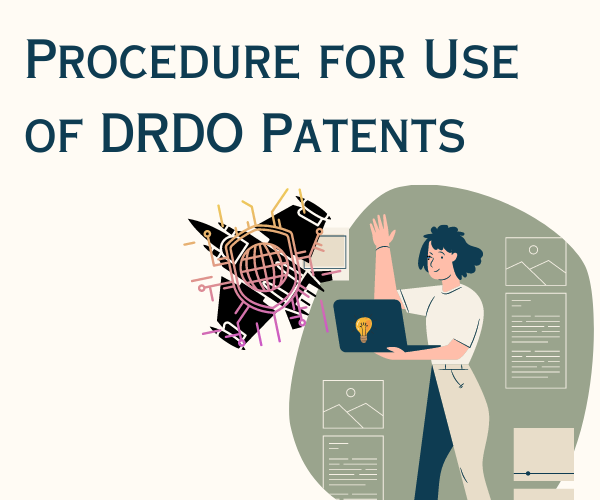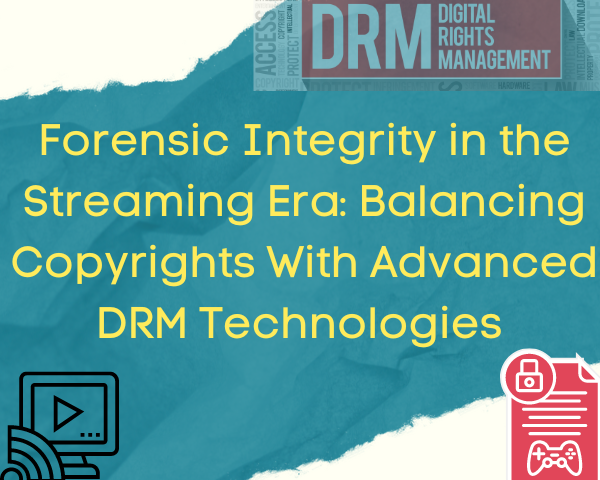The Defence Research and Development Organisation is an agency of the Government of India (DRDO), responsible for the military’s research and development . This organization is responsible for developing defence technologies covering various fields of aeronautics, armaments, electronics, land combat engineering, life sciences, materials, missiles, and naval systems. DRDO has an intellectual property rights policy that aims to manage IP in an effective, ethical and efficient manner to derive full economic potential. DRDO endeavors to use IP in an equitable manner with the overall aim of diffusion of technologies for the benefit of society at large.
Recent developments
In the year 2019, DRDO modified its Intellectual Property Rights (IPR) policy to grant the Indian industry royalty-free access to patents for the technologies developed by it and detailed guidelines on the subject have been issued. These new rules stipulate that a license is granted initially for a period of five years based on the manufacturing capacity of the licensee. The number of licenses issued to a single firm shall not exceed five and can be renewed after five years depending upon their compliance with the license agreement and other defined factors. The DRDO has also expanded the eligibility scope for licensees by including a clause stating that the applicant shall be a ‘manufacturing entity’or ‘a system integrator’and not a trading company. No promoter or director of the applicant entity should have been a willful defaulter. It is a welcome step for start-ups, entrepreneurs and industries. According to various experts, it is better to offer some patents at a nominal cost rather than to keep them on the shelf and pay hefty protection fees for its lifetime.
Current IP Landscape
At present, the IP outlook of the country is characterized by a certain level of disconnect between creators of IP and potential users of IP and this unique policy initiative is aimed at providing a platform for the DRDO innovator community and Indian industry for synergizing their activities. The availability of DRDO-developed patents to the Indian industry at zero cost provides an opportunity for the Indian industry to enhance their capabilities and climb up in the supply chain. This will also strengthen and deepen the bond between the scientific community of DRDO and the Indian industry leading to a cross-fertilization of ideas, entrepreneurship and IP-driven products.
Methodology
The first and foremost stage for the use of patents is the submission of applications for the licensing of patents. The interested party shall be required to submit an application along with a nonrefundable processing fee of Rs. 1000 and details pertaining to their financial/technical capabilities. The license shall be given initially for a period of five years based upon the manufacturing capacity of the applicant. The licensee shall be required to submit Form 27 which is a statement regarding the working of the Patented Invention on a commercial scale in India, so as to enable DRDO in submitting the same information to the Office of the Controller General of Patents, Designs & TradeMarks, as mandated by Indian patent laws and rules. This license shall be renewable after five years, on request, without any extra cost.
The Screening Committee
A DRDO screening committee will review the requests for licenses by taking into consideration the applicant’s financial and technical capabilities as well as national security and strategic implications. The application for a license for a patent shall be examined by a Committee consisting of a chairman, a member secretary and all the other members. The chairman is the Director of Extramural Research & Intellectual Property Rights (ER & IPR). Any representative of Extramural research and intellectual property is the member secretary. The other members include the Director of DIITM (Directorate of Industry Interface and Technology Management), any representative from the IFA (Integrated Financial Advisory) headquarters, and any representative of the concerned lab or DG cluster.
The Committee will meet monthly, however, the scrutiny and approval can be taken by a circulation of files.
Eligibility
The eligibility criteria extend to any Indian company, startup and small entities incorporated as per government laws and regulations. It should be noted that the business dealings with applicants should not have been suspended or banned by the Ministry of Defence or any government department or organization. The applicant shall be a manufacturing entity or a system integrator and not a trading company. Additionally, the firm should possess adequate capability to absorb the technology arising from patent licensing. None of the promoters and directors of the applicant entity should be willful defaulters.
Format of application
The format for submitting an application for licensing of DRDO patents should contain the name and address of the firm which gives details about the area of functioning of the firm. The format should also require the details of incorporation, location of operation including branches/subsidiaries and the core area of expertise. Further it requires the details of manufacturing, marketing licenses, and registrations owned by the Indian industry/start-up (Eg. GST, PAN and TAN, Export Licenses etc.) The most important detail to be given is the title no. of the granted patent for which the license is sought. Applicants should also indicate their choice(s) of jurisdiction intended to commercialize the patent. Any other relevant documents which include the payment details, name of contact person, telephone no and email ID and self-attested copies of documents attached if any shall be provided. In the end, a declaration by the applicant is required which shows that they are not a willful defaulter or not under suspension/debarment/blacklisting by the Government. This declaration acts as proof that he has not hidden any information which is affecting his eligibility. To sum up, applicants are required to provide all necessary documentation including details of projects and supply orders successfully executed in the last two years, details of shareholders, promoters, associated firms and joint venture companies if any, as well as details of any vigilance actions, on-going investigation or suspension or blacklisting of the entity or any of its associates.
Terms of the patent license
The license will be given on a non-exclusive basis only. The number of licenses on a non-exclusive basis to a single entity will be restricted. However, additional licenses, if required, will be given by DRDO on a need basis. The ultimate rights of the patent shall remain with the DRDO. No initial licensing fee or royalty will be charged from the licensee. Technical assessment of the industries submitting applications will be carried out by the screening committee for verification of eligibility of the industry. License to the Applicant will be issued based on their manufacturing capability, assurance on quality and capacity of production apart from other terms and conditions. The licensing agreement which is to be signed will be as per the template approved by the Department of Legal Affairs, Ministry of Law & Justice and Department for Promotion of Industry & Internal Trade, Ministry of Commerce & Industry. DRDO shall have the absolute right to use the licensed patent for its own use in the interest of the Government of India without any restrictions, irrespective of the nature of the License granted. The firm expressing interest should be technically sound to procure or manufacture, supply and maintain the system with required quality standards. The Applicants shall be required to submit details of the commercial working of the licensed patent in a format as mandated by Indian patent laws and rules. License shall be given for a period of five years and DRDO shall have the right to revoke the license if the company fails to adhere to the terms and conditions, especially with respect to adherence to quality or for purposes of national security.
Conclusion
It is fair to say that the DRDO has taken the lead in comparison to other leading R&D bodies such as the Council of Scientific Industrial Research (CSIR), Department of Space, National Research and Development Corporation (NRDC), Indian Council of Medical Research (ICMR), Indian Council of Agricultural Research (ICAR), which have portfolios of national and international patents. The major highlight of this scheme is that under the policy, no license fee or royalty will be applicable on the use of Indian patents held by the research agency and only a processing fee of Rs.1,000 would be levied on the applicants. Earlier, the license fee for patents and royalties could range anywhere from several lakh rupees to over one crore depending upon the type of technology involved, the cost of the project, the baseline price and the post-production quantum of sales to the non-defence sector. This scheme can only lead to further innovation and better relationships between the DRDO and the IP creators of certain industries. While there may be certain disputes that could arise due to the rights granted to both the DRDO and the licensees of DRDO patents, the policy initiative aims to provide a positive impact on the country’s economy.
Author: Febin P




